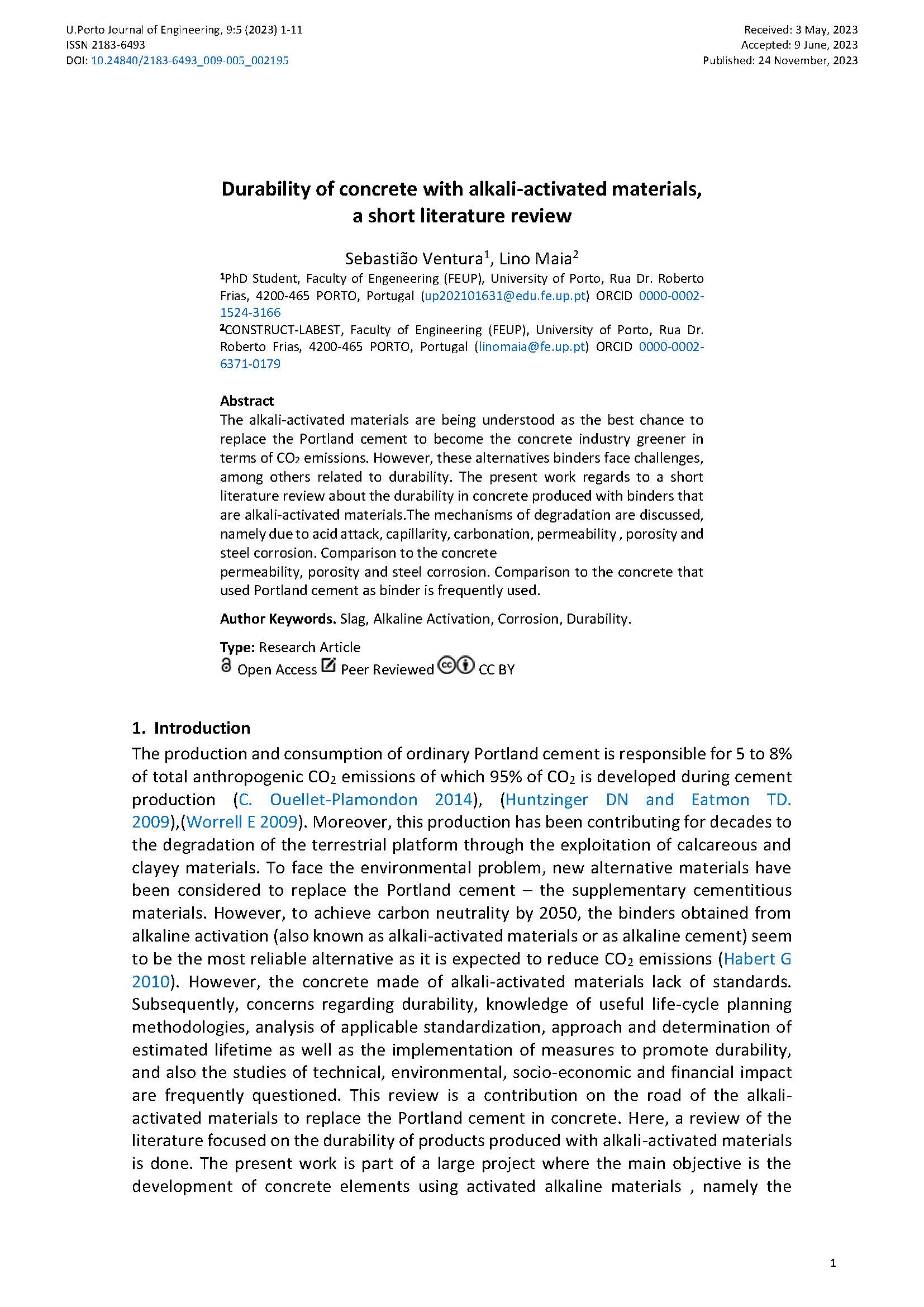Durability of concrete with alkali-activated materials: a short literature review
Main Article Content
Abstract
The alkali-activated materials are being understood as the best chance to replace the Portland cement to become the concrete industry greener in terms of CO2 emissions. However, these alternatives binders face challenges, among others related to durability. The present work regards to a short literature review about the durability in concrete produced with binders that are alkali-activated materials. The mechanisms of degradation are discussed, namely due to acid attack, capillarity, carbonation, permeability , porosity and steel corrosion. Comparison to the concrete that used Portland cement as binder is frequently used.
Downloads
Article Details

This work is licensed under a Creative Commons Attribution 4.0 International License.
Authors who publish with this journal agree to the following terms:
- Authors retain copyright and grant the journal right of first publication with the work simultaneously licensed under a Creative Commons Attribution License that allows others to share the work with an acknowledgement of the work's authorship and initial publication in this journal.
- Authors grant the journal the rights to provide the article in all forms and media so the article can be used on the latest technology even after publication and ensure its long-term preservation.
- Authors are able to enter into separate, additional contractual arrangements for the non-exclusive distribution of the journal's published version of the work (e.g., post it to an institutional repository or publish it in a book), with an acknowledgement of its initial publication in this journal.
- Authors are permitted and encouraged to post their work online (e.g., in institutional repositories or on their website) prior to and during the submission process, as it can lead to productive exchanges, as well as earlier and greater citation of published work (See The Effect of Open Access).

